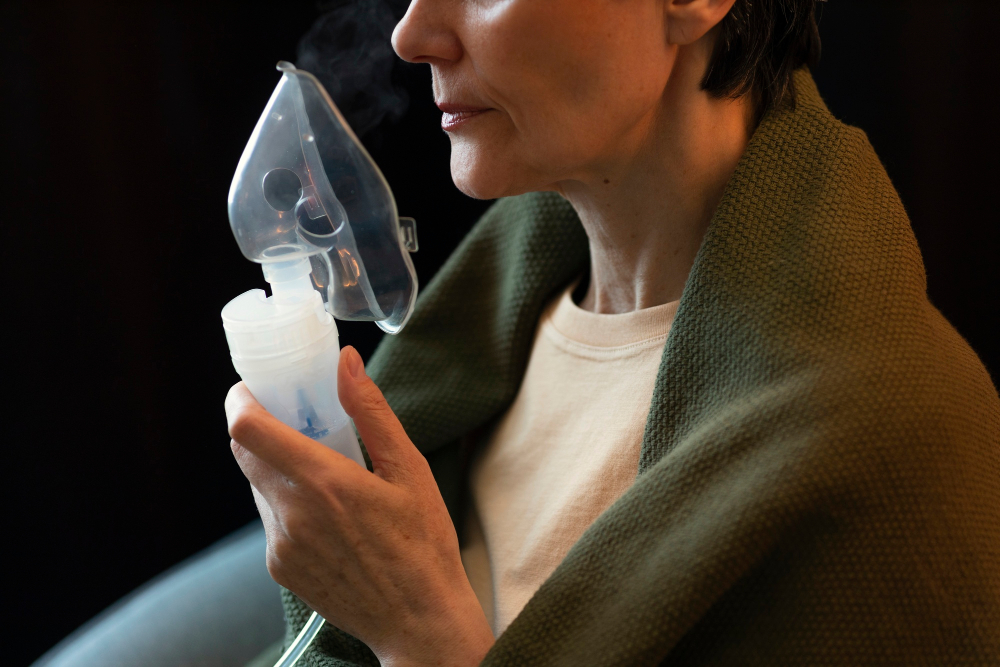
Asthmasense Enhances Aerosolized Drug Delivery Dynamics
Asthma therapy is not only dependent on medication but also the effectiveness with which it is delivered into the lungs. Traditional inhalers disperse medicine into the airway, but without control, a great deal of it falls in the mouth and throat instead of the lungs. Asthmasense fills this gap with a break-through by combining state-of-the-art sensors with research in aerosolized drug delivery dynamics. With particle flow, inhalation pressure, and timing analysis, the device ensures medication is delivered exactly where it’s needed in the lungs’ deepest points, where it’s most effective. Predictive respiratory analytics, in turn, provide physicians and patients with foresight: they identify patterns that will cause exacerbations, hospitalization, or poor medication adherence. This collaboration redefines asthma treatment from reactive to proactive. For patients in Canada, where asthma affects more than 10% of the population, these advances mean better outcomes, reduced costs, and a higher quality of life. Asthmasense is not only an appliance, it’s a scientific leap forward in respiratory health.
Optimizing Aerosolized Drug Delivery Dynamics
In order to administer medication directly into the lungs, velocity, distribution, and particle size need to be controlled tightly. Traditional inhalers lack any method of monitoring or regulating these parameters, leading to unpredictable dosing. Asthmasense uses the physics of aerosolized drug delivery dynamics to monitor airflow in real time and correlate it with medication dispersion inhaled. This allows for feedback as to whether the medicine is getting through to lower airways or being trapped in the oropharynx, where it achieves little therapeutic effect. Canadian studies found that up to 70% of patients use their inhalers inappropriately, wasting medication and causing exacerbations (CMAJ 2023). With sensors and artificial intelligence processing, Asthmasense provides accurate measurements of each dose so every inhalation is more effective. By opening the door of particle science to patients, this innovation closes the gap between lab research and reality. The ability to deploy aerosolized drug delivery mechanics in consumer health products is a significant step toward fighting chronic respiratory diseases.
Predictive Respiratory Analytics in Action
Data collected from each breath is not just stored, it is analyzed using predictive respiratory analytics. This process applies AI-driven models to forecast issues such as declining lung function, irregular inhalation patterns, or heightened exacerbation risk. For patients in Canada, where seasons and air quality changes often trigger attacks, predictive information can mean the world of difference between stability and hospitalization. Asthmasense translates millions of datapoints into insights that can be acted upon: reminders for good technique, warnings for poor compliance, and early warning of deterioration. Physicians are supported by dashboards displaying risk scores and trend lines, making consultations more precise and evidence-based. Compared to static monitoring devices, predictive analytics offer a living profile of respiratory health that develops with the patient. By incorporating predictive respiratory analytics into day-to-day care, Asthmasense facilitates a proactive healthcare model that empowers patients and reduces systemic pressures on hospitals and clinics.
Bridging Particle Science and Clinical Care
Success in aerosolized drug delivery dynamics comes from translating physics to clinical results. As lab research examines particles under controlled circumstances, patients inhale under stress, fatigue, or environmental insult. Asthmasense fills this gap by bringing real-world monitoring to the clinic. Every inhaled recording becomes part of a diagnostic profile reflecting both biomechanics and environmental stimulus. Together with predictive respiratory analytics, clinicians can distinguish between poor outcomes due to improper technique, medication type, or exogenous influences such as pollution or humidity. This integration enhances Canadian clinic decision-making, whereby physicians historically must do without objective adherence information. By integrating particle science directly to day-to-day therapy, Asthmasense ensures medical research findings aren’t locked in journal pages but instead directly at the bedside. The capacity to combine inhalation dynamics and predictive modeling renders this product an ideal example of translational medicine within respiratory medicine.
Canadian Healthcare Impact and Accessibility
Asthma generates Canadian healthcare expenditures in excess of billions in direct and indirect costs. Nonadherence and poor technique in medication are two of the biggest causes of this burden. By bringing aerosolized drug delivery dynamics to bear in an easy-to-use device, Asthmasense minimizes wasted doses and enhances clinical results. At the same time, predictive respiratory analytics across the respiratory sphere help clinicians better allocate resources, facilitating timely interventions to lower emergency visits. Access too sits at the core: through bilingual interfaces, Canadian data privacy law (PIPEDA) compliance, and cross-age adaptability, the device provides inclusivity. For Indigenous and rural populations, wherein access to healthcare remains scant, remote monitoring made possible through predictive analytics closes gaps in treatment. Addressing both efficiency and equity, in this case, means positioning Asthmasense as something beyond mere consumer device. Instead, it becomes an enabler of sustainable, cost-efficient, and patient-centric Canadian healthcare. As part of national health strategies, it could transform asthma treatment from reactive management to proactive disease control.
Industry Leadership in Respiratory Innovation
The worldwide asthma device market is growing at breakneck speed, with North America accounting for almost half of all revenues (MarketWatch 2024). However, current solutions fall far short of combining aerosolized drug delivery physics and predictive respiratory analytics. Asthmasense is alone in offering both within one platform, filling the gap between particle deposition’s micro-level science and patient health trend forecasting’s macro-level. This two-pronged approach appeals not just to clinicians, but to insurers, researchers, and policymakers as well. In Canada, where asthma is the third most prevalent chronic illness, this two-way capability gives another dimension of evidence to the product’s role as a national innovator. By outpacing mere reminder to predictive modeling, Asthmasense raises the bar for digital respiratory care. Its ability to guide policy, galvanize competitors, and redefine patient expectations makes it a long-term leader.
Conclusion
Today, asthma treatment is no longer merely a matter of dosing up with medication, but of delivering the correct drug to the correct location in the lungs at the correct moment. Asthmasense achieves this by combining aerosolized drug delivery dynamics with predictive respiratory analytics, so every inhalation is a science-driven, clinically meaningful experience. For patients, this translates to improved control, reduced hospitalization, and increased understanding of their own respiratory condition. For the clinician, it offers real-time, objective information to inform care and raise the level of practice. For Canada’s health system, it saves money, increases equity, and strengthens the nation’s role as a leader in digital health innovation. In its ability to embed complex science in a simple device, Asthmasense shows the potential of technology to transform management of chronic disease into an active, data-driven practice. The more that are embraced, the more the product not only enriches individual lives but also reshapes the larger landscape of respiratory medicine.



